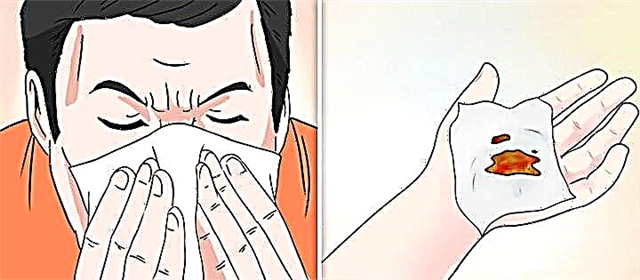Insufficiency of the mitral valve is a condition that is accompanied by overflow of blood in the left atrium and gradually leads to a significant violation of hemodynamics. The reason is the incomplete closure of its valves. The initial stage of the disease can be asymptomatic, therefore, mitral insufficiency of the 1st degree does not cause concern for the patient, while the steady progression of the disease ends in severe complications and death.
What it is
Mitral valve defect with reverse blood flow (regurgitation) from the left ventricle to the atrium as a result of incomplete closure of the leaflets is called mitral insufficiency. In an independent form, the acquired disease is rare and has a benign character for a long time. But in the composition of combined and combined defects, it is detected in half of all cases of cardiac defects and quickly leads to serious complications.
Normally, the left ventricle in systole ejects its contents into the aorta, which branches out to form the systemic circulation. In this way, nutrients and oxygen are transferred to organs, including the myocardium. When pressurized, the butterfly valve closes and prevents reverse movement. If there is a hole during contraction, regurgitation occurs, and some of the blood comes back, stretching the left atrium. As the condition progresses, there is a steady increase in the volume of the heart cavities, an increase in pressure, and congestion in the vessels of the lungs.
The mechanism of defect formation can be seen in the figure:

Causes of occurrence
The formation of a defect can occur in the prenatal period, in which case it is considered congenital. The reasons for this pathology can be:
- maternal alcoholism, drug use and smoking during pregnancy;
- ionizing radiation;
- poisoning and taking certain medications (antibiotics, non-steroidal anti-inflammatory drugs);
- systemic and infectious diseases.
The etiological factors of the acquired deviation are usually:
- streptococcal and staphylococcal infections with the development of septic endocarditis;
- autoimmune diseases (lupus, multiple sclerosis);
- myocardial damage as a result of a heart attack;
- mitral valve prolapse;
- Marfan syndrome;
- chest trauma with rupture of the valves or fibers that hold them.
Relative mitral insufficiency is observed with a pronounced increase in the left ventricle. This condition can be caused by dilated cardiomyopathy, aortic valve disease, myocarditis, and hypertension.
Symptoms
At the initial stage of the disease, there are no clinical signs. It is possible to identify the problem only during an instrumental examination of the heart. The prognosis depends on the size of the opening through which blood returns to the left atrium. In those who are unlucky, there is congestion in the pulmonary vessels, and there are signs of ischemia of the myocardium and other organs. Such a patient usually presents the following complaints:
- lack of air during exercise, and then at rest;
- cardiac asthma;
- fatigue when performing normal activities;
- cough that worsens when lying down;
- the appearance of sputum with blood;
- swelling or swelling of the legs;
- pain on the left side in the chest;
- increased heart rate, atrial fibrillation;
- hoarseness (as a result of compression of the laryngeal nerve by the dilated pulmonary trunk or left atrium);
- heaviness in the right hypochondrium due to an increase in the liver.
When examining such a patient, I try to note the presence of such signs of mitral regurgitation:
- acrocyanosis (blue discoloration of the limbs and the tip of the nose, ears) against a background of general pallor;
- swelling of the veins in the neck;
- tremor of the chest on palpation, definition of a heart beat and pulsation in the epigastrium;
- with percussion, there is an increase in the boundaries of cardiac dullness;
- with auscultation - weakening of the first, strengthening and splitting of the second tone, murmur during systole.
Degree of deficiency
Degrees of mitral regurgitation:
- First (I). The reverse blood flow does not exceed 25%, the human condition is characterized as satisfactory. There is hypertrophy of the heart muscle (left sections), which helps to temporarily compensate for the failure. For a while, this mechanism allows you to restrain the increase in pressure in the small circle. There are no symptoms.
- The second (subcompensated, II). Abandonment is 50%, congestion develops in the lungs. The first signs of the disease appear.
- Third (decompensated, III). The return of blood increases to 60 - 90% of the total. A high load on the right ventricle leads to its dilatation. Acute mitral valve insufficiency of grade 3 can cause pulmonary edema.
Diagnostics
You can identify the problem using the following methods:
- ECG. It will show signs of left myocardial hypertrophy, and later - the right ventricle. Sometimes it is possible to fix tachycardia and rhythm disturbances.
- Plain chest x-ray. On it you can see an increase in the left sections, a displacement of the esophagus, at later stages - hypertrophy of the right ventricle. Congestion in the lungs is manifested by vasodilation and indistinctness of their outlines.
- Phonocardiogram. A very informative examination, in which it is possible to determine all the noises produced by the heart muscle. A symptom of the disease will be a decrease in the sound of ventricular contraction, a systolic murmur, a click of the valve closing.
- The violation is confirmed on EchoCG. The ultrasound method detects enlargement of the heart chambers and incomplete closure of the mitral opening.
Treatment methods
Treatment of mitral valve insufficiency at the stage of compensation consists in constant monitoring of the patient, reducing physical activity and using means to prevent the progression of the disease. If complications appear, and there is no possibility of solving the problem surgically, symptomatic therapy is used:
- cardiac glycosides;
- diuretics;
- beta blockers;
- calcium antagonists;
- ACE inhibitors;
- anticoagulants and antiplatelet agents.
No drug can cure the disease. Conservative methods only help to temporarily delay the deterioration and improve the quality of life. The only way to fix the problem is to perform an operation.
Surgical interventions: indications and techniques
The indication for surgical treatment is a gross violation of the structure of the valves, leading to a pronounced deviation of hemodynamics. Valve restoration or replacement is required in the following case:
- a history of endocarditis;
- the first manifestations of heart failure (shortness of breath, edema);
- rhythm disturbances;
- frequent severe pain in the chest, signs of congestion in the pulmonary system.
You cannot operate in the following cases:
- the onset of an acute illness or exacerbation of a chronic one;
- stroke or heart attack;
- heat;
- extreme heart failure.
The main types of interventions are considered to be complete replacement or plastic valve replacement. The second option is carried out in the following ways:
- annuloplasty with soft or hard rings;
- leaflet resection;
- replacement of chords with artificial materials;
- edge-to-edge technique.
Types and features of mitral prostheses
Cardiac surgeons use three types of prostheses:
- Mechanical, which at first were made in the form of a ball, a little later - in the form of hinges. They often have blood clots and embolism can complicate the installation. The patient has to constantly take antiplatelet drugs. The most modern products are considered to be processed with a biologically intact titanium alloy.
- Biological. Created from the pericardium or other natural tissues of their own. They do not have the ability to form blood clots.
- Allografts are taken from a corpse and cryopreserved, and then implanted into a suitable donor.

Case study: neglected mitral regurgitation
I would like to cite as an example a clinical case in which the lack of timely treatment led to such a diagnosis - mitral insufficiency of the 3rd degree. A patient was admitted to the hospital with complaints of severe dyspnea at rest, aggravated by physical exertion, cough with sputum, in which blood streaks are sometimes found, weakness, edema.
Considers himself unhealthy for many years, often had sore throats, worried about the joints. Deterioration occurred after suffering from acute respiratory viral infections. In the lungs, when listening, small bubbling rales are detected, there is a weakening of the apical impulse, a click of the opening of the mitral valve, and systolic murmur. The liver is enlarged, the lower edge is determined 5 cm below the hypochondrium. On echocardiography - thickening of the valve leaflets, calcification, expansion of the left atrium, mitral valve regurgitation of the III degree.
The patient is scheduled for a prosthetics operation, after completing which he will be able to escape. Get treatment on time!
How to live with mitral regurgitation
At the initial stage, when there are no circulatory disorders, the patient can simply lead a normal healthy lifestyle. Strong psycho-emotional shocks and hard physical labor in unfavorable conditions are contraindicated for him. When the first signs of deviation develop, we recommend:
- transition to lighter work;
- for young people - learning a new profession;
- mental activity is not limited;
- service in the army is determined by the commission, most often the conscript is sent to the post office, radio engineering.
With edema, liver enlargement, ascites, severe shortness of breath and arrhythmias, a person must undergo a commission where he can be assigned a disability with the possibility of partial labor or complete relief from it. The conscript in this case is considered unfit for service.
How is the prevention of complications carried out?
To prevent complications that can occur with mitral regurgitation (including for those who are undergoing rehabilitation after valve surgery), it is recommended:
- A gradual increase in physical activity, regular exercise therapy, walking, walking in the fresh air is the most important thing.
- The use of drugs prescribed by a doctor (anticoagulants, statins, diuretics, antihypertensive drugs).
Doctor's advice to those who decide to undergo surgery:
- undergo all examinations (ECG, ultrasound of the heart, radiography) and talk with a cardiac surgeon;
- receive full training according to the list provided by a narrow operating specialist;
- after the intervention, take a course of antibiotics and anticoagulants to prevent infection and blood clots.
See you soon on the pages of our portal!



